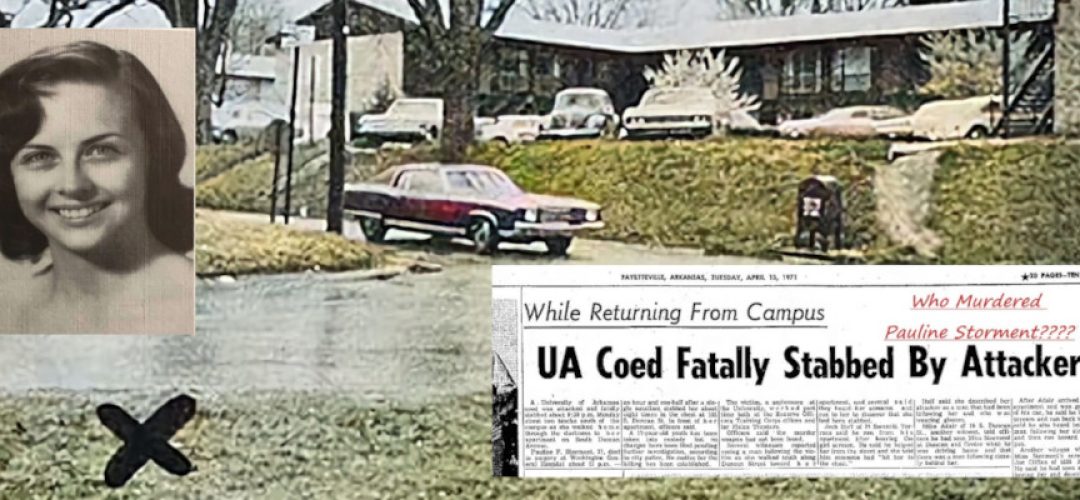The following is A.I Generated Narrative based on the testimonies of Michele K. Phelan age 15, Tim Copeland age 18, Mike Boyd age 19, Richard Finley age 17, Terry Smith age 18, provided to the Prosecuting Attorney Mahlon Gibson and Deputy Prosecuting Attorney James O. Burnett of Arkansas in the month of April 1971 following the April 12th murder of Pauline Storment.
It was a warm April evening in 1971, and the air carried the distinct aroma of spring blossoms intermixed with the familiar scent of marijuana that often lingered around the Gray House located at 301 University not far from the University of Arkansas campus in Fayetteville.
Michelle Phelan, a young woman with a mischievous glint in her eyes, sat in the kitchen, meticulously breaking down a prescription of 30 diet pills she had obtained from Dr. Lee Parker. The sharp, bitter smell of crushed amphetamines filled the air as she and Mike Michaels worked diligently, their fingers deftly separating the powdery substance from the capsules.
In the living room, the sound of laughter and chatter echoed, punctuated by the occasional clinking of glasses and the crackle of a record player spinning in the background. Terry Smith, Tim Copeland, and Mike Boyd lounged on well-worn couches, their eyes glazed over as the effects of the speed they had ingested earlier began to take hold.
Peter Kunkel, a tall, lanky figure with a mop of unruly hair, moved between the kitchen and living room, his presence seeming to command attention. He had already taken a hit of Preludin, his pupils dilated, and his movements jittery yet purposeful.
As the night progressed, the atmosphere grew more electric, fueled by a potent cocktail of amphetamines and youthful rebellion. Michelle Phelan, her veins pulsing with the rush of the drugs, recalled seeing Richard Finley, Peter Kunkel, Mike Michaels, Terry Smith, and Mike Boyd drifting in and out of the kitchen, their faces flushed and their eyes wide with anticipation.
Around 9:20 PM, Michelle, Peter, and Richard ventured out to the Jet Set, their footsteps echoing on the pavement as they sought refreshments and cigarettes. Crossing paths with Steve Cooper, they exchanged brief pleasantries, their voices tinged with the slurred cadence of intoxication.
Upon returning to the Gray House, Peter went inside to retrieve the keys to Mike Michaels’ motorcycle, intending to take Richard home. Michelle, her mind racing with the residual effects of the speed, wandered downstairs to make a phone call, her words tumbling out in a breathless rush as she gossiped with her friend Jill Graves.
Rejoining Peter on the porch, the cool night air caressed their flushed faces, and for a fleeting moment, the world seemed to stand still. But the spell was broken when Mike Miller appeared, prompting Michelle to beckon him upstairs, her impatience palpable.
As the night wore on, the energy within the Gray House remained electric, fueled by the intoxicating combination of drugs, music, and youthful exuberance. Peter Kunkel, his movements becoming increasingly erratic, took a second shot of speed around 10 PM, his thirst for excitement unquenchable.
When Mike Boyd returned to the apartment at 10:15 PM, he found Peter already there, his request to be taken home punctuated by the sight of his brown sport jacket carelessly discarded on the seat beside him. As they ventured out into the night, their path was abruptly halted by the flashing lights of a police car, casting an eerie glow over the otherwise darkened street.
Peter’s nervousness was palpable, his concern focused not on the suspicious nature of their late-night excursion but rather on the possibility of any lingering traces of drugs in the vehicle. The air grew thick with tension as the officers approached, their footsteps echoing like distant thunderclaps in the stillness of the night.






















